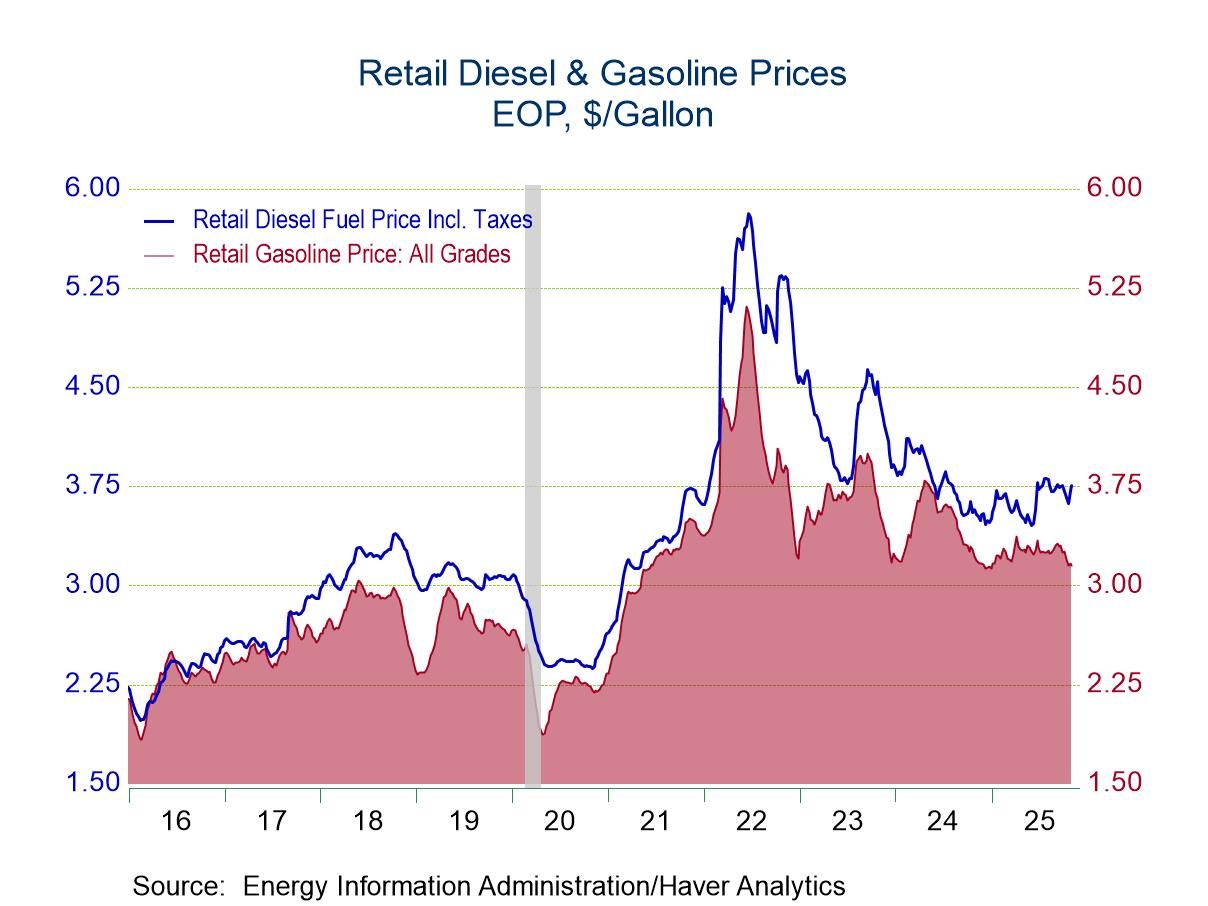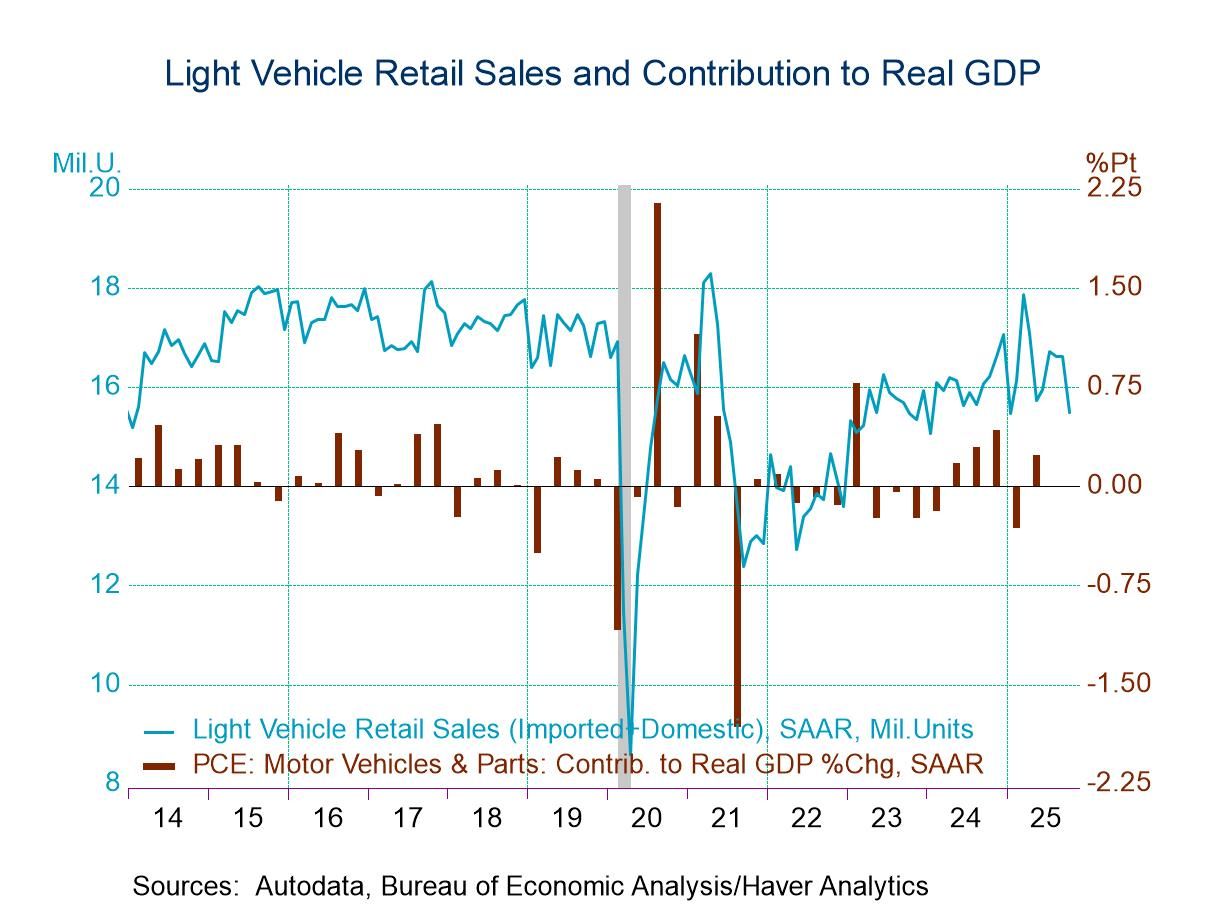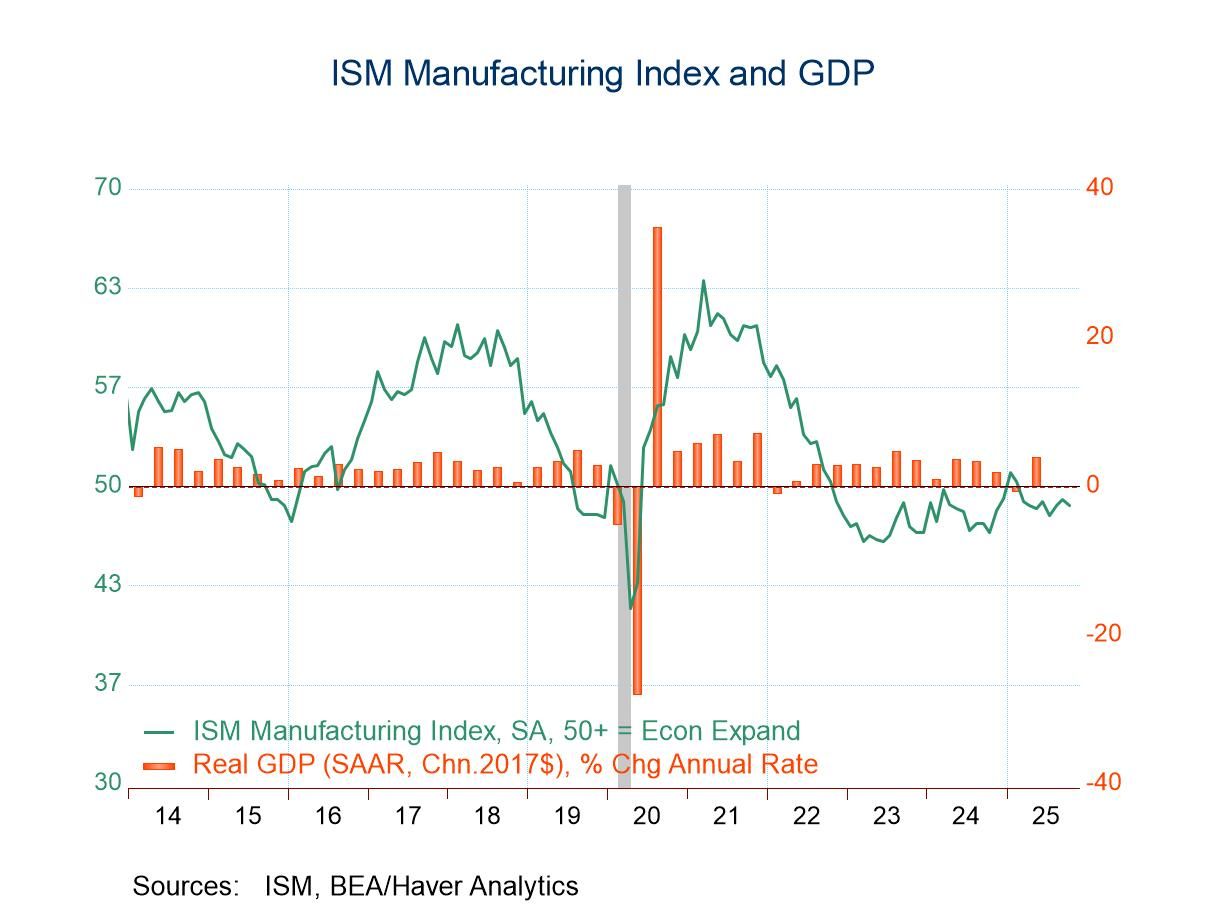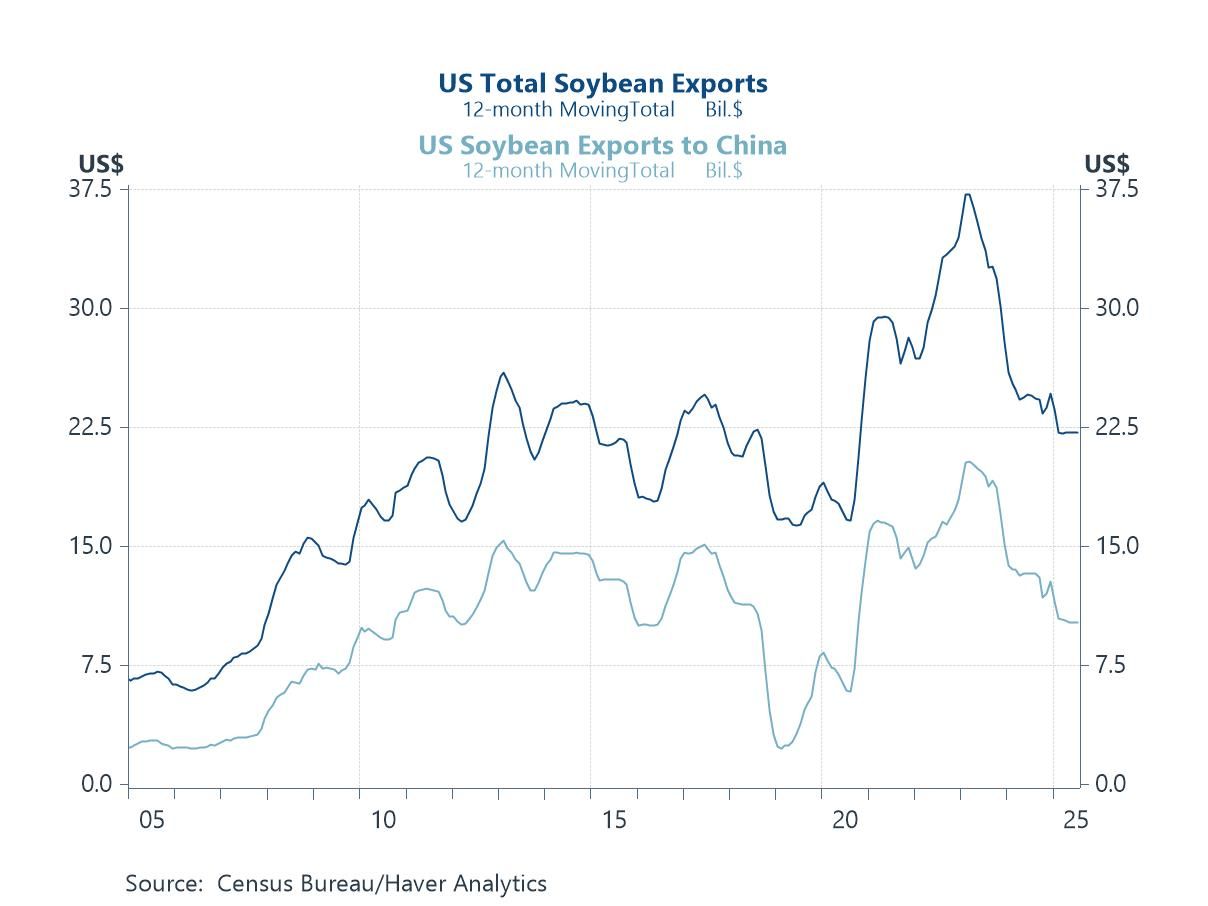U.S. Chicago Business Barometer Rebounds in August; Still Below 50
Summary
- 46.1 in August vs. 45.3 in July; 3.2 pts. above the year-to-date average of 42.9.
- Four of the five subindexes remain below 50.
- Production (47.9, the 7th contraction in 8 mths.), New Orders (45.1, the 11th contraction in 12 mths.), Employment (39.5, the 9th straight contraction and a 3-month low), Order Backlogs (33.6, the lowest since May), and Supplier Deliveries (58.7, the highest since Oct. ’22).
- Prices paid index jumps 10.2 pts. to a three-month-high 66.0.


The ISM-Chicago Purchasing Managers Business Barometer rose to 46.1 in August after a 2.1-point drop to 45.3 in July. The latest reading was the second m/m rise in three months following six consecutive m/m declines; thus, indicating contraction for the ninth straight month in August but at a slightly less severe pace. The index had been below the 50 expansion-contraction dividing line since September 2022, with an exception of a 55.6 high in November 2023. The latest number was slightly below 48.8 in August 2023 and significantly down from a peak of 72.1 in July 2021. The Action Economics Forecast Survey had expected 44.5 for August.
Haver Analytics constructs an ISM-Adjusted Chicago Business Barometer with methodology similar to the ISM Composite Index. This measure increased to 48.2 in August after a 2.3-point decrease to 46.8 in July, registering the ninth successive monthly contraction but at a less severe rate. The index had been below 50 since September 2022, with an exception of a 55.1 high in November 2023. The latest number was below 49.2 in August 2023 and a high of 64.2 in December 2021.
Four of the five subindexes remained below the critical 50 level this month. The production index rose to 47.9 in August, the third m/m rise in four months, after an 8.2-point fall to 46.4 in July, indicating production contracted for the seventh time in eight months. The latest figure was still down from a high of 59.8 in November 2023 and a high of 69.6 in January 2021. An increased 29% of respondents (NSA) reported higher production this month while a lessened 25% reported a decline. The new orders index increased to 45.1 in August after a 2.5-point decrease to 43.1 in July, showing new orders contracted for the 11th time in 12 months but at a less severe pace. The latest number remained down from a high of 54.8 in August 2023 and a peak of 77.0 in May 2021. A steady 21% of respondents (NSA) reported higher new orders this month while 31% reported a decrease. The order backlogs index slid to 33.6 in August, the lowest level since May, after falling to 37.7 in July; thus, remaining well below a high of 58.2 in December 2022 and a peak of 75.2 in May 2021.
On the labor front, the employment index fell to 39.5 in August, the fourth m/m fall in five months, from 41.9 in July, indicating employment contracted for the ninth straight month and at the most severe pace in three months. The index remained below a high of 52.4 in November 2023 and a high of 55.2 in October 2021. A lessened 10% of respondents (NSA) reported higher employment this month while 29% reported less hiring.
Notably, the supplier deliveries index rose to 58.7 in August, the fourth successive m/m rise, following a 5.1-point gain to 55.8 in July. The latest figure registered its third consecutive month above the 50 level and the highest reading since October 2022.
On the inflation front, input prices continued to increase this month and at a faster rising speed. The prices paid index rose to 66.0 in August, the highest reading since May, from 55.8 in July. The index was modestly below a high of 74.5 in August 2023 and well below a peak of 96.5 in November 2021. An increased 33% of respondents (NSA) reported higher prices paid in August while only 3% reported price declines.
The Chicago Business Barometer is considered to be a leading indicator of the U.S. economy. An indicator reading above 50 indicates expansion while below 50 suggests contraction. Summary data are contained in Haver's USECON database with detail including the ISM-style index in the SURVEYS database. The expectations figure from the Action Economics Forecast Survey is in the AS1REPNA database.


Winnie Tapasanun
AuthorMore in Author Profile »Winnie Tapasanun has been working for Haver Analytics since 2013. She has 20+ years of working in the financial services industry. As Vice President and Economic Analyst at Globicus International, Inc., a New York-based company specializing in macroeconomics and financial markets, Winnie oversaw the company’s business operations, managed financial and economic data, and wrote daily reports on macroeconomics and financial markets. Prior to working at Globicus, she was Investment Promotion Officer at the New York Office of the Thailand Board of Investment (BOI) where she wrote monthly reports on the U.S. economic outlook, wrote reports on the outlook of key U.S. industries, and assisted investors on doing business and investment in Thailand. Prior to joining the BOI, she was Adjunct Professor teaching International Political Economy/International Relations at the City College of New York. Prior to her teaching experience at the CCNY, Winnie successfully completed internships at the United Nations. Winnie holds an MA Degree from Long Island University, New York. She also did graduate studies at Columbia University in the City of New York and doctoral requirements at the Graduate Center of the City University of New York. Her areas of specialization are international political economy, macroeconomics, financial markets, political economy, international relations, and business development/business strategy. Her regional specialization includes, but not limited to, Southeast Asia and East Asia. Winnie is bilingual in English and Thai with competency in French. She loves to travel (~30 countries) to better understand each country’s unique economy, fascinating culture and people as well as the global economy as a whole.







 Asia
Asia